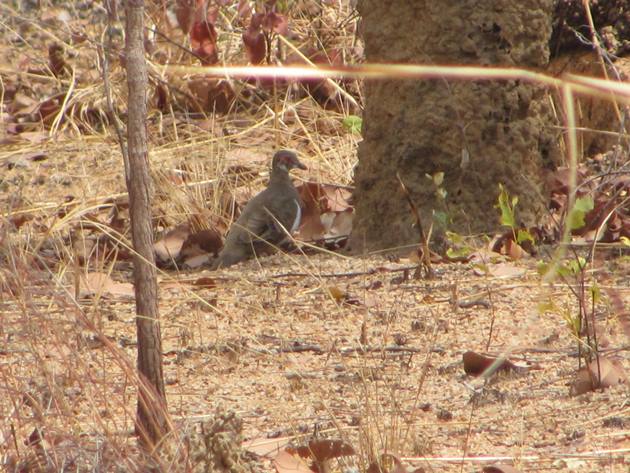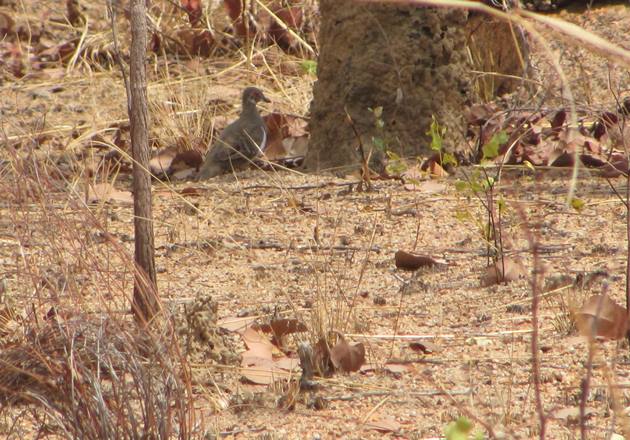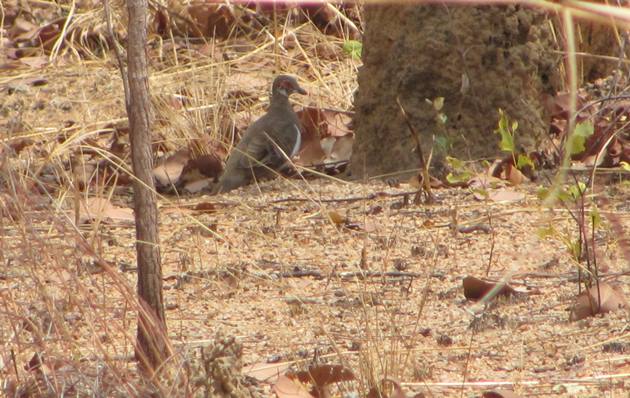
It is always very hard to choose a “best bird of the year” and often I have resorted to several “best birds”. We have had a very good year as far as observing Australian birds and have managed to get 456 bird species onto the 2018 year list. Realistically we don’t expect to add any more bird species in the last couple of days of 2018, but never say never!! We have not visited many places around Australia this year when you consider the size of the continent, but where we have been we have found some excellent birds. Many of the birds that we observed this year we had not seen for some time. However, one bird in particular stands out as a bird that had dodged our observations for a very long time. We had not observed a Partridge Pigeon since September 1996 in the Northern Territory. We had not actually considered observing one when we visited Leliyn/Edith Falls on 13th November this year.
Partridge Pigeons Geophaps smithii are on the IUCN Red List of threatened Species 2016. The Partridge Pigeon is only found in the Top End of Australia and Kakadu National Park is a good location to find them. The Partridge Pigeon in the Northern Territory differs in facial features to the sub species that is found in the Kimberley region of Western Australia. The sub species Geophaps smithii smithii has red skin around its face rather than the yellow of the sub species Geophaps smithii blauwii.
We had decided to end our northerly trip in November at Edith Falls and from there we would turn around and head back towards Broome. There was very little traffic on the highway and there are very few tourists around at this time of year in the north of Australia due to the heat and risk of cyclones. As we turned off the highway towards Edith Falls we were suddenly confronted by a Partridge Pigeon right in the middle of the road. Thankfully the Partridge Pigeon did not fly off, but walked to the edge of the road on my side of our vehicle.
Partridge Pigeon
The Partridge Pigeon moved into the shade beside a termite mound and was slightly obscured by the long dry grass. I was only able to take three photos before it wandered further away, but we thoroughly enjoyed our encounter with one unexpected Partridge Pigeon. I checked eBird for Partridge Pigeons to see where other bird observers have encountered them and it is mostly in Kakadu National Park for this sub species. The other observers have also had issues with long dry grass when photographing them, but some lucky observers have been lucky enough to encounter more than one bird!
Partridge Pigeon
It is always enjoyable when you encounter a bird species that you have not seen for a few years! Hopefully it won’t be another twenty two years before we see another Partridge Pigeon! We also still have the Western Australia sub species of Partridge Pigeon to add to our life list!
I will take this opportunity to wish you all good birding in the last couple of day of 2018 and a lot more enjoyable and productive birding in 2019!















An unexpected, long not-seen, endangered bird shows up in the middle of the road–great story! Striking bird! Happy New Year, Clare & Grant–best wishes for fun birding in 2019.
Same to you and your family!
15:30 January 1st & 116 bird species around Broome, so a good start and we can slacken off now!